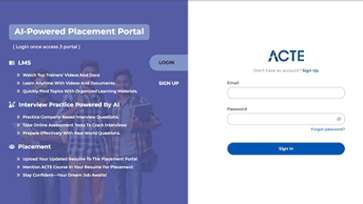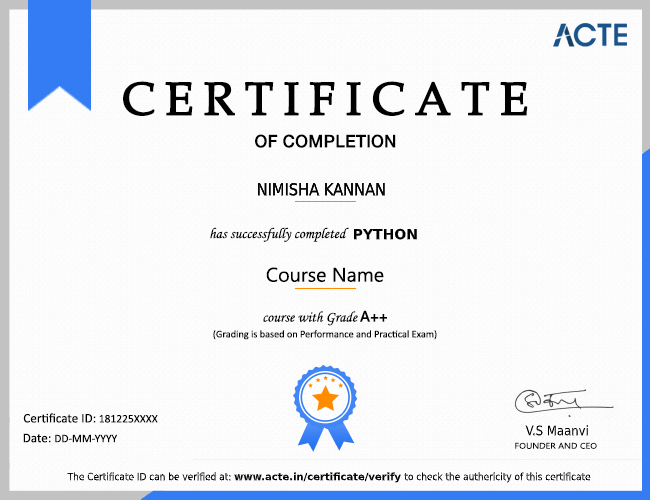Robotic process automation (RPA) is an emerging form of business process automation technology based on the notion of software robots or artificial intelligence (AI) workers.Using RPA tools, a company can configure software, or a “robot,” to capture and interpret applications for processing a transaction, manipulating data, triggering responses and communicating with other digital systems. Take our RPA courses from basic to advanced level.Start Learning with us ACTE Robotic Process Automation (RPA) Classroom & Online Training Course.
The growth of the industry and widespread adoption of RPA will drive job growth as well. Many types of jobs are available in RPA, including developer, project manager, business analyst, solution architect, and consultant. This is fact, going to be the future and most important thing in the coming years. RPA in the future is going to incorporate the following things: Incorporating AI for advanced decision-making and inferencing.
Meanwhile, there are so many good opportunities are been involved in the future scope of RPA can be observed in the field of data entry and data rekeying jobs. These tasks could easily automated with RPA. The various repetitive tasks such as formatting, data assembling or anything, which requires a series of steps, that can easily carried out with the help of RPA. RPA will definitely become the next revolution in technology and you will surely find thousands of jobs opening every year. There are more than 5 million jobs awaiting you, right now.
However, robotic process automation (RPA) anticipated evolving and soaring over the forecast period. The modern enterprises need robotic process automation for faster implementation, execution, and scaling. Technological advancements have triggered businesses to overcome new challenges aimed to cope with changing consumer demand and requirements. In the recent past, the adoption of robotic process automation has captured the attention of many SMEs and large enterprises. This can be able to attribute to RPA’s ability to deliver seamless operation coupled with significant value addition from the resources.
We are happy and proud to say that we have strong relationship with over 700+ small, mid-sized and MNCs. Many of these companies have openings in Robotics. Moreover, we have a very active placement cell that provides 100% placement assistance to our students. The cell also contributes by training students in mock interviews and discussions even after the course completion.
Absolutely it’s an future field where, According to Forrester Research (Nov 2015), up to 9% of the global workforce will be threatened by RPA software in the near future. The change is coming, and it is up to process improvement professionals to prepare for this disruption by properly educating their corporations on the do’s and don’ts of RPA. Robotic process automation (RPA) been heralded as the next big thing in process management. Google Trends reports show that the last 2 years have seen a peak in interest in these technologies.
The Difference between Robotic Process Automation and Artificial Intelligence. RPA is a software robot that mimics human actions, whereas AI is the simulation of human intelligence by machines. RPA is a technology that uses specific set of rules and algorithm and based on automated a task. Mean While AI is focused more on doing a human-level task, RPA is practically a software that reduces human efforts — it is about saving the business and white-collar workers' time.
Robotics Process Automation (RPA) allows organizations to automate task just as a human being was doing them across application and systems. ... RPA does not require the development of code, nor does it require direct access to the code or database of the applications. Initially, coding skills are not required. However, if you want to learn more of RPA, at least one programming language would be required to extend the existing RPA functionality. There are no prerequisites for Automation Anywhere. No coding is required..... Automation Anywhere empowers organizations to automate the processes that has been executed by the humans.
Our courseware is designed to give a hands-on approach to the students in Robotics Automation. The course is made up of theoretical classes that teach the basics of each module followed by high-intensity practical sessions reflecting the current challenges and needs of the industry that will demand the students’ time and commitment.
In 2020, RPA is going to claim its place as a central platform for other enterprise automation tools. RPA has been around for the last few years and has advanced considerably. It can manage any types of tasks that are repetitive and predictable. It frees up the resources to focus on tasks that require creativity, decision-making and judgement. As per Forrester, RPA Market will reach $2.9B by 2021.
The future certainly belongs to RPA, and workforces around the world are investing heavily in this efficient technology to fast-track organizational efficiency, effectiveness and profitability. Nonetheless, global robotic process automation has come a long way since 2016. At the time, RPA software purchases amounted to $73 million. This increased to $113 million in 2017, $153 million in 2018, and $192 million in 2019. In 2020, HFS Research estimates that this figure will rise to $232 million and by 2021 to $272 million. These projections indicate that there is strong growth in RPA adoption in the global market. RPA services have increased rapidly since 2016, rising from $198 million, to $630 million in 2019. By 2021, that figure is expected to rise to $952 million. Experts roundly agree that RPA is the future of IT automation
The growth of the industry and widespread adoption of RPA will drive job growth as well. Many types of jobs are available in RPA, including developer, project manager, business analyst, solution architect, and consultant. People are often concerned about robotic process automation taking jobs away from real people. But a lot of companies who need manual data entry already aren’t hiring local employees for those tasks. They’re outsourcing their data entry overseas. Since the bots would be managed/hosted here in the USA, using RPA actually repatriates jobs.
Features of RPA
A detailed look on common features of RPA
Rich-analytical Suite
RPA software comes with a rich-analytical suite that discovers the performance of the robot workforce. Most enterprise level RPA monitors and manages automated functions from a central console. This console can be accessed from anywhere and offer basic metrics on robots, servers, workflows, and more. The detailed operation analysis not only enables the users to track the operations and determine issues but it supports with streamlining future workloads. This solution of RPA requires no integration since everything is inbuilt and all set right out of the box.
Security
If an organization runs on automation, an abundant number of users will likely demand access to the RPA product. Here, it is crucial to have strong user access management features. Therefore, RPA tools include role-based security capability to ensure action specific permissions. In addition, many robotic process automation tools enable the configuration as well as customization of encryption capabilities for securing certain data types to defend against the interruption of network communication. The entire automated data, audits, and instructions accessed by the bot are encrypted to avoid malicious tampering and ensure the legitimacy of historical record compliance. Furthermore, the enterprise RPA solutions also offer detailed logging of users’ actions as well as each task executed. This feature assures internal security and maintains compliance with industry regulations like SOX, HIPAA or PCI DSS.
Simple Bot Creation Interface
RPA tools allow creating bots quickly and effortlessly by capturing mouse click and keystrokes with built-in screen recorder components. Many RPA products include the option to create and edit bots manually using the Task Editor.
Source Control
The method enables secure storage of each version of a process in progress without the risk of being deleted. The source control method enables developers to examine the difference between versions of a certain process to discover what has changed. Likewise, the control room component in some RPA products allows scheduling bots, handling bot’s versions, maintaining a log of user & bot activities, and administering users & roles. This component can offer auditable management as well as control over the RPA environment, including clients, bots, users, and schedules. It also equally performs as the single-point-of-access & control for bot implementation.
Hosting and Deployment Option
The RPA system is designed to offer a customer deployment across virtual machines, terminal services, and cloud. Among the other deployment options, the cloud deployment attracts the most customers for its scalability and flexibility. Adding to this, the RPA system is powerful enough to automatically deploy robots in groups of hundreds. This feature comprises an agentless configuration and proactively eliminates the central server synchronization problems and runtime updates by protecting client configuration as well as bot deployment overlap. Therefore, businesses can install RPA tools on desktops and deploy it on servers to access data for completing repetitive tasks. Similarly, they can also allow multiple bots to run different works within a single process while processing a high volume of data.
Rules-based Exception Handling
RPA system supports deployments with rules-based exception handling. This feature handles the exception in a proactive manner. Just consider a robot reports an exception, and then the following actions are triggered:
- The server re-assigns the same process to another bot for retry as well as remove the 1st bot from production.
- In case the retry is successful, the server maintains the reassignment and raises a level 2 alert to report exception & resolution.
- If the retry is unsuccessful, it stops the 2ndbot and raises a level 1 alert to report exception as well as failed resolution.
Debugging
The biggest benefit of RPA from a development perspective is its capability to go through a process and adjust dynamically. Some RPA tools require to stop running to make the change and replicate the process. Other RPA tools allow dynamic interaction while debugging. It also allows changing variable values to test different scenarios without start and stop the running. This dynamic approach of debugging allows to develop on the fly and to resolve issues in a production environment without requiring changes to the process.
Less Script or Script Less Automation
The modern RPA tools are code-free and can automate any application in any department where the admin or clerical work is performed across an enterprise. Hence, the employees with less programming skills can create bots, just through GUI and different intuitive wizards. This low-code or less code development platform reduces the amount of hand-code-writing and enables accelerated delivery of business apps. In addition, this platform lowers the initial cost of installation, training as well as deployment
Seamless Integration
The core enterprise RPA integration is merging with the various 3rdparty applications in the digital infrastructure of businesses. With seamless integration, RPA tools provide unparalleled flexibility in evaluating the digital workforce performance. The following table depicts the most common integration in robotic process automation software:






























